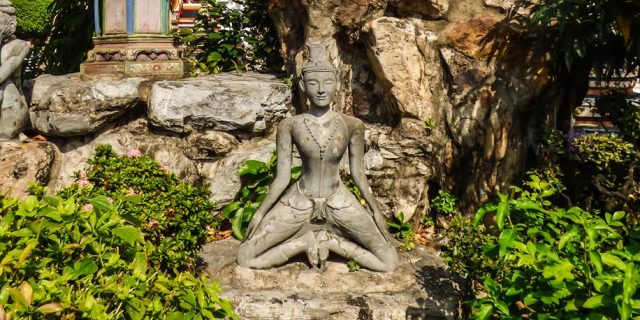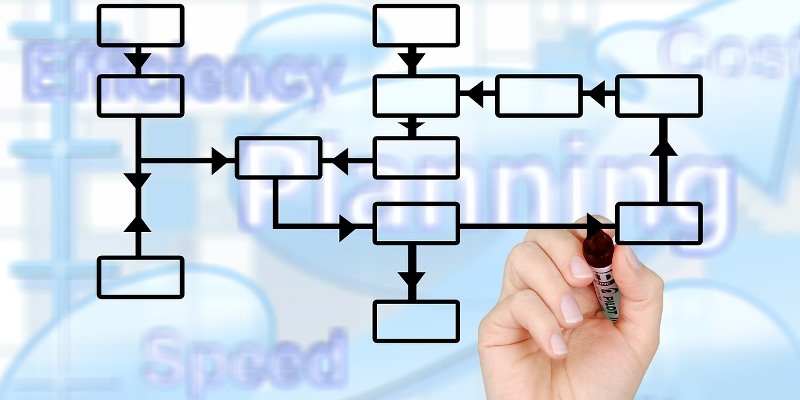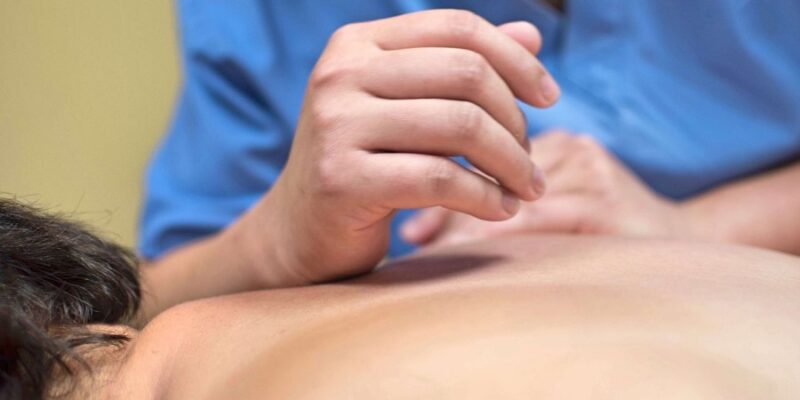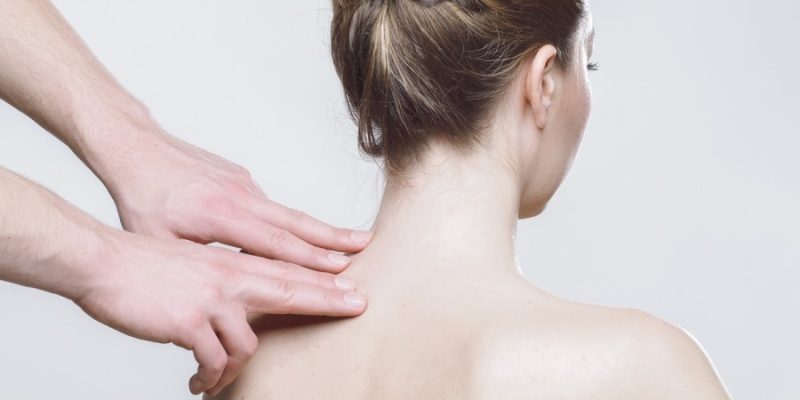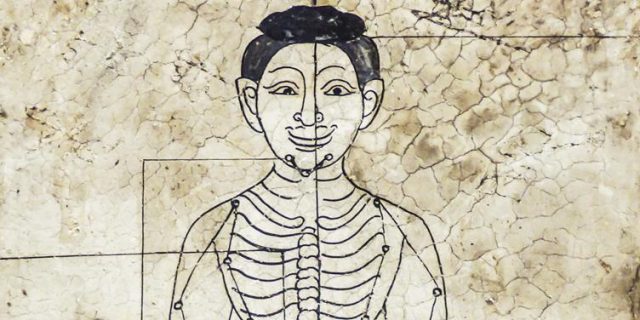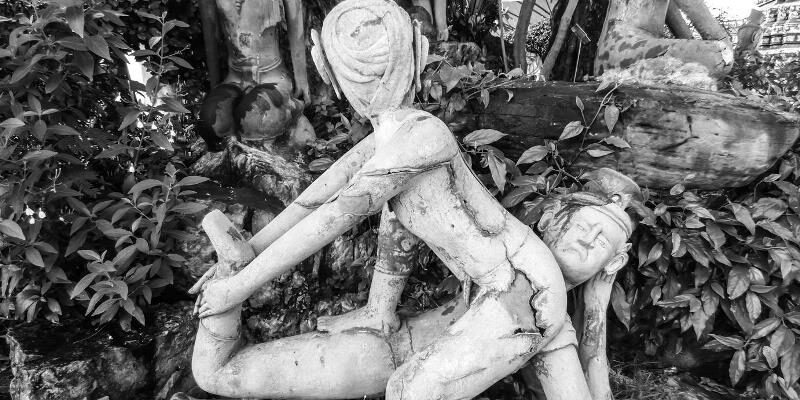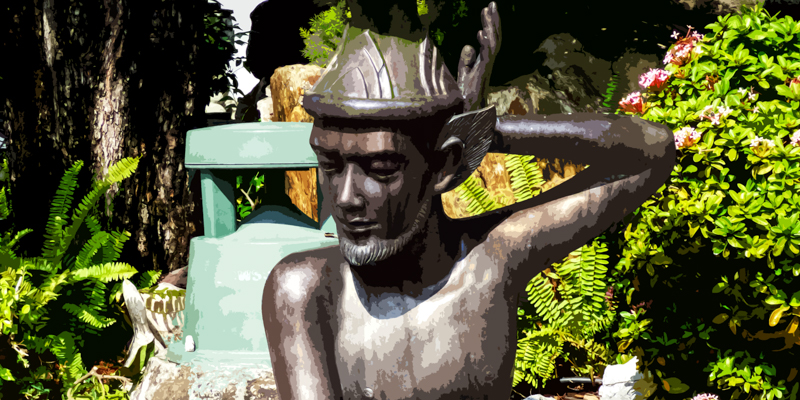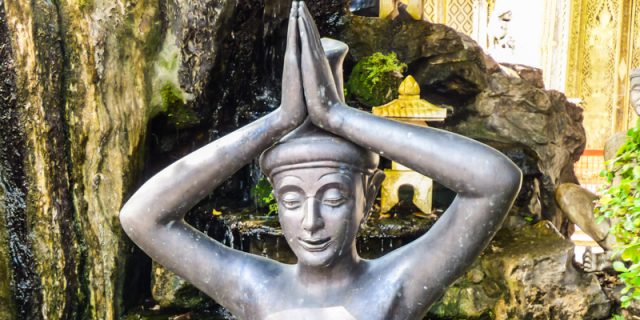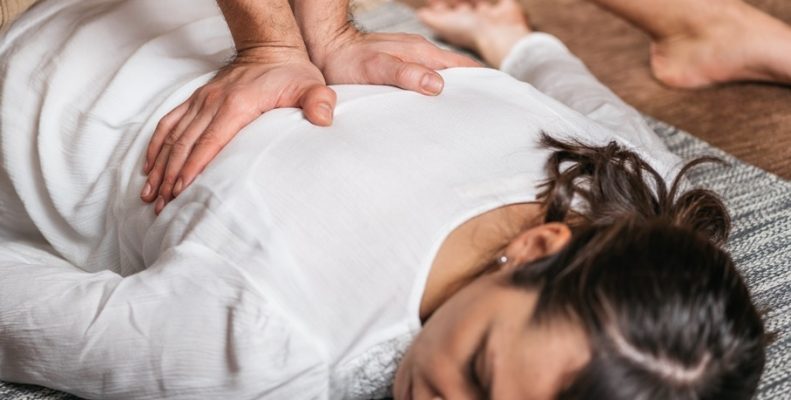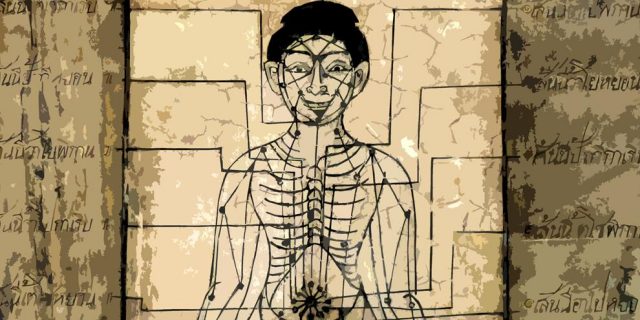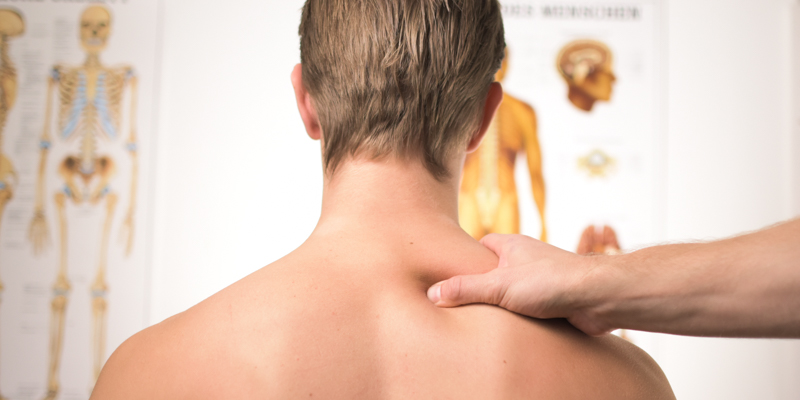
We should recognize that many of our clients will come to us for a Thai Massage session because they experience some kind of unease, dis-ability or physical pain(s).
There are also patients who only come to get a massage for relaxation, or perhaps out of prevention of illness, or maybe to increase their flexibility, or for whatever other motives not related to therapy, but in my Thai Massage practice this group was always a minority.
Generally, we could say that people want to move and they want to move pain-free and freely, being able to use the maximum functionality, possibilities and capacities of their body.
Thai Massage Characteristics
Before going more in detail on possible therapy methods and techniques, we’ll briefly repeat the more general characteristics of Thai Massage:
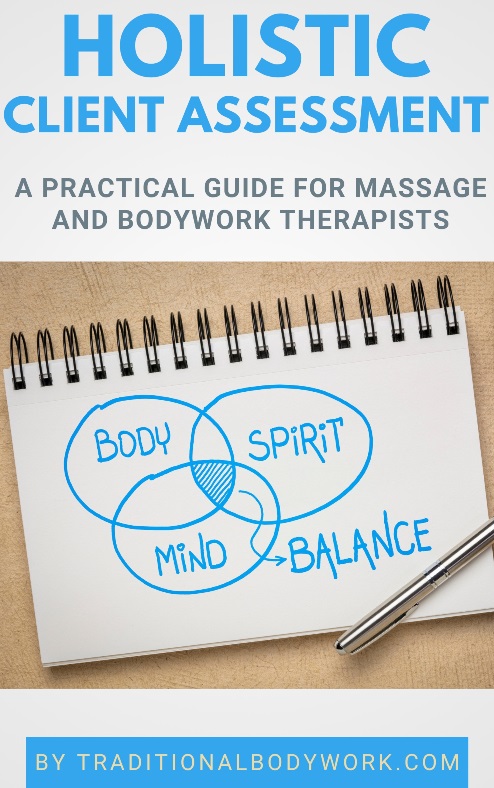
- Thai Massage is one of three branches of Traditional Thai Medicine, a holistic healing discipline (the other two branches are spiritual/religious healing and nutritional/herbal healing);
- Thai Massage addresses the energetic system (free flow of energy) by manipulating the physical system (the observable body);
- Diseases, illnesses are considered a combination of physical and psychological factors which on their part are caused by many factors;
- Healing will most often imply work from one or more other healing disciplines (spiritual/religious healing and/or nutritional and herbal healing);
- Although there exists a solid Thai diagnostic tradition, an important part of our diagnosis will also be based on experience and intuition;
- We’ll usually apply a full-body massage and only in addition we give specific Thai Massage therapy aimed at certain body parts or bodily systems.
Furthermore, Traditional Thai Massage benefits overall health by:
- inducing better alignment and balance of the skeletal structure;
- improving postural alignment;
- increasing flexibility and range of movement/motion;
- relieving muscular and joint tensions and pains;
- balancing the body’s energy system (function equilibrium);
- increasing overall energy level (vitality);
- increasing awareness of the physical body;
- calming the nervous system and promotes a deep sense of relaxation (reduces Stress);
- allowing for a significant release of deep emotional distress
- stimulating blood circulation (nutrition/healing) and lymph drainage (detox);
- stimulating better functioning of internal organs;
- relieving fatigue, swollen limbs, and headaches.
Initial Massage Therapy Approach
Before we start a Thai Massage therapy session we will always ask the receiver about his or her (mental, emotional and physical) condition, his or her daily activities, work, hobbies, sports, and medical history.

It’s important to have this information in order for us to diagnose the receiver’s problems, to know how we will approach the receiver and which techniques and/or exercises we can or can not use and if we need to be extra careful with (certain parts of) the body or even avoid working with certain parts. Also sometimes it will turn out that we can not give a session.
After having diagnosed the problem(s) of our patient, taking into account all “external” aspects and the specific imbalances (excess or depletion ) between the Four Elements, we’ll start with examining which Sen Energy Lines (Sib Sen) are affected. Furthermore (not strictly necessary in the Traditional Thai approach, but helpful for our “Western mind”), we’ll try to determine which muscles, parts of the skeleton, and/or articulations are involved.
After analyzing which Energy Lines and body sections are involved, we can “design” our treatment. It means we will select the set of exercises we will carry out on our patient to stimulate or soothe the designated Sen Energy Lines and body sections.
Nevertheless, in the actual practical work there are quite a lot of things and factors we need to think about. I’ve mentioned these rather technical aspects as keywords below in the next section.
Practical Real-life Aspects
- Muscles (contractions/pairs) – Tendons (glued/taped to bones) – Ligaments (range of possible movement of a joint)
- Muscle contractions (injury, stress, spindles, nerve mismatch)
- Acute tension/contraction – long term tension/contraction
- Postures (Lordosis, Kyphosis, rounded shoulder, length of legs, scoliosis, etc)
- Movement, and range of movement
- Skin Sensory Receptors (touch, movement, itch, temperature, injury/pain)
- Connective Tissue (Fascia)
- Muscle relaxation – Skeletal (Re)Alignment – Cracks
- Pain (when, how, why, etc) – Local pain – Referred pain/Trigger Points
- Injury Recovery (rich blood supply, slow sustained pressure)
- Always start with the “good side”, only afterwards with the “bad side”.
- Soft, medium, or firm pressure
- Sustained pressure (broad and pointed)
- Broad Line Work – Detailed Line Work
- Acupressure (warming up – pressure – hold – release – relax)
- Breaking blocks (broad area contractions, adhesions, knots, and tangles)
- Massage (knead, squeeze, pull, lift, circle,)
- Hot treatment versus cold treatment
- Blood Stops (Arterial Compression)
- Joint Mobilization (cartilage, fluid)
- Stretch – Hold Stretch – Semi release Stretch – Further Stretch
- Percussion techniques – Circulation
- Nerves (pulling – twitch – flip)
- Vibration, Rocking (harmonics), Rhythm
- Soft Tissue Release (softening, shortest state, lock, and stretch)
- Yogic stretches
- Energy Line Release (blocked point – weakest point – two point manipulation)
- Stretch – Palm – Thumb – Palm – Stretch







